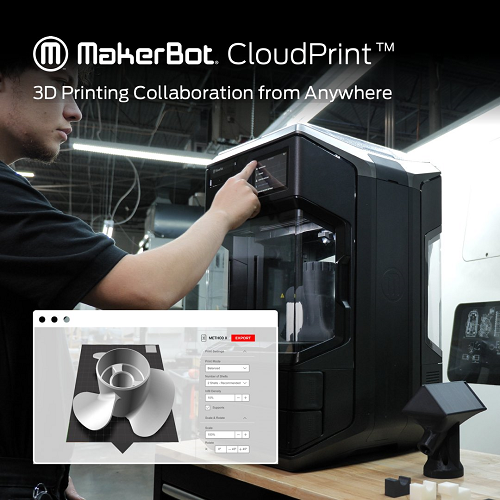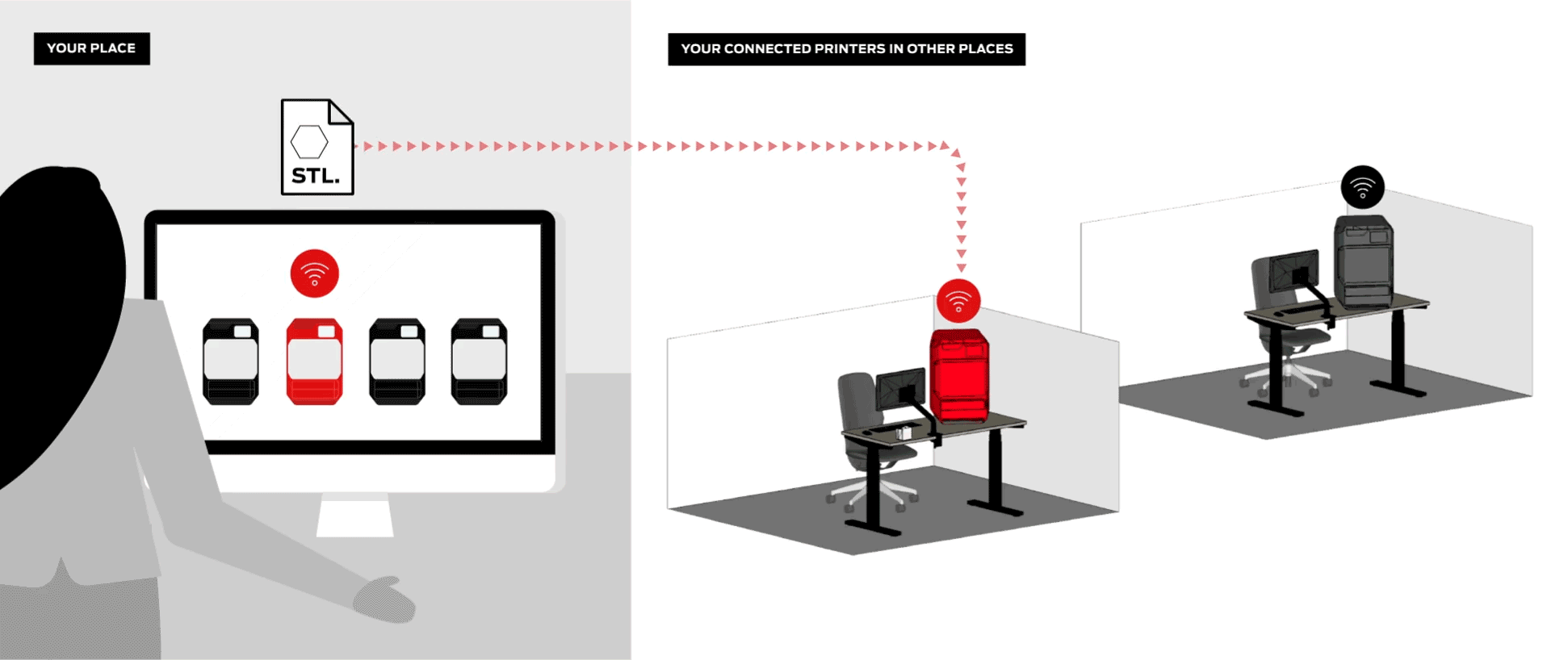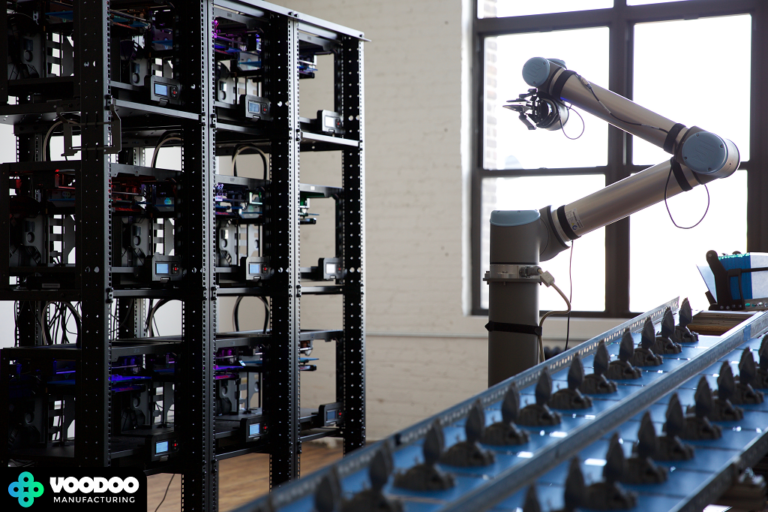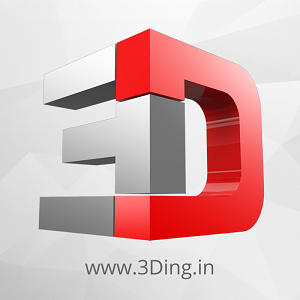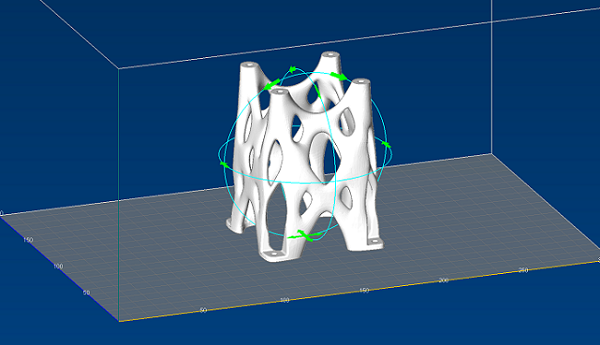MakerBot CloudPrint Software Makes Remote, Collaborative 3D Printing Seamless
Due to COVID-19, many more people are working remotely these days, which makes it imperative for employees to be able to print jobs, and manage them, remotely as well. That’s why MakerBot is launching a new workflow meant to make remote 3D printing collaboration easier. Not to be confused with Google’s CloudPrint or this open source factory, the new MakerBot CloudPrint software, formerly called MakerBot Cloud, is a next generation 3D printing platform that ensures all individuals and teams can collaboratively and seamlessly use 3D printing across multiple devices both onsite and remotely.
“We are experiencing a global phenomenon with more people working remotely than ever before. Without the right tools, this can lead to a disruption in work and, ultimately, a decrease in performance. We believe that MakerBot CloudPrint is an ideal solution for individual or team collaboration from anywhere,” stated MakerBot’s CEO Nadav Goshen. “MakerBot CloudPrint offers an all-in-one solution for users to prepare, queue, print, and manage printers. MakerBot CloudPrint aims to easily adapt to your workflow, no matter how many printers you have. This solution was built with productivity in mind, and we plan to continuously improve the fastest CAD-to-part benefits of the METHOD platform.”
By providing one centralized, cloud-based application, this new workflow software offers a faster, more advanced printing solution, and helps optimize 3D printer usage and collaboration as well. MakerBot CloudPrint marries cloud scalability with familiar software features to create a 3D printing workflow management solution that makes it easier for users to prepare, queue, print, manage, and monitor their jobs.
MakerBot CloudPrint provides users with more control, letting them reorder the queue if priorities suddenly change and share access to other connected MakerBot 3D printers. The new software solution can also reduce 3D printer downtime between projects, which helps streamline the workflow and ramp up productivity. It offers many other handy features as well, such as the ability to group printers into workspaces and shared in classrooms, production areas, or with teams. You can actually set permissions for different team betters for more access, or just create submission links so anyone can submit prints for approval.
The software solution’s full-featured print preparation view makes it easy to preview and position parts on the build plate, and allows users to slice prints right from their browser. A live camera feed allows users to add, monitor, and control access to other connected printers, as well as get live status updates on print jobs. Additionally, with the queue and print history features, it’s easy to track projects, and a dashboard offers a central place from which to view prints. You can generate reports to analyze printer performance, and optimized print modes can be used to access advanced settings, like custom and experimental print profiles, on the MakerBot METHOD platform. Finally, MakerBot CloudPrint allows users in need of more advanced print features to unlock expert METHOD settings, such as extra MakerBot LABS for METHOD user settings and all of the METHOD extruders and materials.
MakerBot CloudPrint already has one stamp of approval from NYC-based PENSA, an industrial design and invention consulting firm, uses the METHOD platform.
“Working remotely has meant a lot of changes to how we collaborate in a creative environment,” explained PENSA CEO Marco Perry. “While many digital tools have replaced face to face interactions, nothing can replace working with physical prototypes. MakerBot CloudPrint enables us to work with our 3D printers at a distance, removing one more barrier in the process.”
The software is integrated with Google products, and is also compatible with all MakerBot solutions, including the Replicator 3D printer series and SKETCH Classroom bundle. Additional MakerBot CloudPrint features include:
- multi-model support
- better slicing and preview options
- speed optimizations
- improved print performance
- new UX/UI designs
MakerBot CloudPrint: 3D Printing Collaboration Everywhere | MakerBot
In the near future, additional features, such as custom print modes and improved monitoring and queuing, will be released for MakerBot CloudPrint, which is currently available to use free of charge. This is one major difference between the solution and Ultimaker’s subscription-based Ultimaker Essentials enterprise software platform, which was just launched last month. While MakerBot CloudPrint is compatible with its SKETCH Classroom bundle, Ultimaker Essentials includes a new eLearning platform, as well as access to three courses from the recently launched Ultimaker 3D Printing Academy. Ultimaker Essentials also comes with a catalog of verified plugins meant to improve the 3D printing workflow, while MakerBot CloudPrint appears to accomplish the same without the use of plugins. Test it out and see for yourself!
(Images courtesy of MakerBot)
The post MakerBot CloudPrint Software Makes Remote, Collaborative 3D Printing Seamless appeared first on 3DPrint.com | The Voice of 3D Printing / Additive Manufacturing.
3D Printing Service Bureau Voodoo Manufacturing Closes Permanently
“Please continue dreaming, imagining, designing, and making new things.” – The Voodoo Manufacturing Company
Millions of lives have been affected as the COVID-19 pandemic has ravaged the world. Unfortunately, catastrophic health scares usually breed financial devastation too. As unemployment has wreaked havoc on millions of household budgets in just the US alone, businesses of every size are suffering as well.
 The latest casualty within the 3D printing space is Voodoo Manufacturing. This may come as a huge surprise as they were considered to be a shining star in their niche, rising quickly to become one of the world’s largest high-volume 3D printing farms.
The latest casualty within the 3D printing space is Voodoo Manufacturing. This may come as a huge surprise as they were considered to be a shining star in their niche, rising quickly to become one of the world’s largest high-volume 3D printing farms.
Here is an excerpt from their recent announcement upon closing:
“Dear Voodoo Manufacturing community,
It’s with a heavy heart that we announce that Voodoo Manufacturing has permanently closed its doors.
COVID-19 was challenging for everyone, but we tried to continue going. We repurposed our factory to make PPE in order to help fight the pandemic and through donations and individual purchases, we were able to distribute more than 15,000 protective face shields across the U.S. Unfortunately, without a clear end to the current health crisis, Voodoo Manufacturing couldn’t make it to the other side….”
Now, we come full circle in reporting on the Brooklyn, NY-based startup, from their opening in June of 2015 to their recent sign-off just a little over five years later. In that short amount of time, there was considerable news to share as the small but dynamic company—founded by a group of engineers who previously worked at MakerBot—ascended. From beginning to end, their intent was notable in terms of continually working to bring affordability and accessibility to potential users via a refreshing business model based on fast 3D printing services with low overhead—and low prices.
The past five years marked collaborations with other companies, both big and small. Right out of the gate, business was thriving. Numerous projects were highlighted; for example, they collaborated with Autodesk and e-NABLE Community Foundation, acting as the largest donor for 3D printed prosthetics sent to kids in developing countries. Industry leaders like Autodesk, Microsoft, and Mattel also served as customers. Upon receiving $1.4 million in seed funding from investment company KPCB Edge, they were able to expand further in terms of their facility, 3D printers on hand, and doubling their team from nine to eighteen.
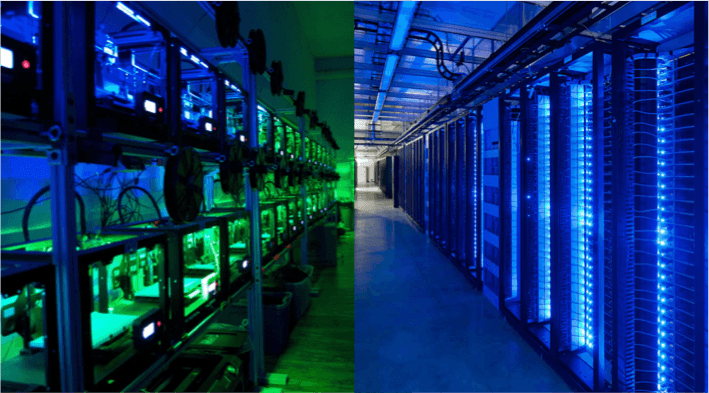
Voodoo Manufacturing’s 3D printer farm
Voodoo continued to grow rapidly, releasing Project Skywalker, a fully functional, robot-operated 3D printer cluster in 2017. The next year, their team launched Fulfilled by Voodoo (FBV), a 3D printing fulfillment service mean to encourage entrepreneurs to open online businesses. Overall, success continued for the service bureau while the industry continued to become more competitive.
Fast forward to 2020, however, and all bets were off (pretty much for everyone) as the COVID-19 pandemic halted lives—and businesses. The Voodoo team explains that they kicked into action 3D printing personal protective equipment (PPE), and distributing 15,000 face shields around the US. They re-designed their 3D printing service bureau factory and continued on due to donations and purchases, but quickly became apparent that they would not “make it to the other side.”
Small businesses within the US have been especially vulnerable during these strange and challenging financial times, but as they falter in the droves, the economy is affected substantially; in fact, as a whole, the US business sector and economy are reliant on small businesses as they are cumulatively the largest employer of workers.
For thousands of commercial endeavors, however, no matter how hard they work to keep up with new regulations after COVID or scramble into new directions to please existing or new customers, such enormous financial damage has occurred that closings have been and will continue to be inevitable.
[Source / Images: Voodoo Manufacturing]
The post 3D Printing Service Bureau Voodoo Manufacturing Closes Permanently appeared first on 3DPrint.com | The Voice of 3D Printing / Additive Manufacturing.
Voodoo Manufacturing shuts down permanently amid pandemic
3D Printing News Briefs, July 25, 2020: MakerBot, ANSYS, Sintavia, Nexa3D & Henkel
We’re all business in today’s 3D Printing News Briefs! MakerBot has a new distribution partner, and ANSYS is launching a new product. Sintavia has acquired an additional Arcam 3D printer from GE Additive. Finally, Nexa3D and Henkel are introducing a new material for 3D printing medical and athletic devices.
MakerBot Welcomes New Distribution Partner
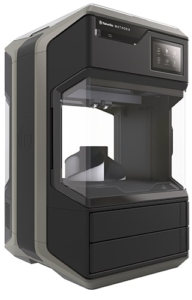 MakerBot announced that it has expanded its distributor network by entering into an agreement with the Distrinova division of the Unitum Group, which will distribute the MakerBot METHOD 3D print platform throughout Belgium, the Netherlands, and Luxembourg. This partnership will increase the availability of the entire platform, which offers industrial capabilities and engineering-grade materials, to more customers in the Benelux region who need professional, powerful 3D printing solutions. The METHOD platform consists of the METHOD and METHOD X printers, various accessories like an experimental extruder, METHOD Carbon Fiber editions, and materials like Nylon Carbon Fiber, ABS, ASA, SR-30, and PC-ABS FR, and Distrinova’s network of channel partners will distribute all of them, in addition to MakerBot’s educational 3D printing solutions.
MakerBot announced that it has expanded its distributor network by entering into an agreement with the Distrinova division of the Unitum Group, which will distribute the MakerBot METHOD 3D print platform throughout Belgium, the Netherlands, and Luxembourg. This partnership will increase the availability of the entire platform, which offers industrial capabilities and engineering-grade materials, to more customers in the Benelux region who need professional, powerful 3D printing solutions. The METHOD platform consists of the METHOD and METHOD X printers, various accessories like an experimental extruder, METHOD Carbon Fiber editions, and materials like Nylon Carbon Fiber, ABS, ASA, SR-30, and PC-ABS FR, and Distrinova’s network of channel partners will distribute all of them, in addition to MakerBot’s educational 3D printing solutions.
“We are very proud to introduce MakerBot and the METHOD technology into our product portfolio,” said Guy Van der Celen, CEO of Unitum Group BV. ” With the METHOD range we can provide our resellers network not only reliable, state-of-the-art 3D printers, but also the opportunity to offer their customers high value-added solutions for a broad range of new application areas. In addition, the introduction of MakerBot corresponds perfectly with Distrinovas’ strategy to develop strong partnerships with the leading innovative global manufacturers of 3D printers.”
ANSYS Event to Launch Discovery Product
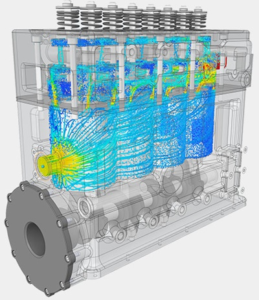 Engineering simulation software company ANSYS released its Discovery Live tool for real-time 3D simulation back in 2017, and will soon be introducing a brand new ANSYS Discovery product, kicking things off with a virtual launch event on July 29th. The company states that the product can help companies improve their product design processes, increase ROI, and provide answers to important design questions earlier, without having to wait for the results of a simulation.
Engineering simulation software company ANSYS released its Discovery Live tool for real-time 3D simulation back in 2017, and will soon be introducing a brand new ANSYS Discovery product, kicking things off with a virtual launch event on July 29th. The company states that the product can help companies improve their product design processes, increase ROI, and provide answers to important design questions earlier, without having to wait for the results of a simulation.
“This reimagining of the Discovery line of products aims to maximize ease of use, speed and accuracy across thermal, structural, fluids and multiphysics simulation all from within a single consistent user interface (UI),” Justin Hendrickson, Senior Director, Design Product Management, wrote in a blog post about the new ANSYS Discovery.
“Traditionally, simulation has been used during later stages of design when making corrections can be costly and time consuming. However, with the new Ansys Discovery, every engineer will be able to leverage simulation early during concept evaluation as well as during design refinement and optimization. This means that they will be able to optimize products and workflows faster and on a tighter budget.”
The launch event will feature a keynote address from Mark Hindsbo, Vice President and General Manager, Design Business Unit, a product demonstration by Hendrickson, two customer success stories, and several interactive breakout sessions, including one focusing on thermal simulation and another exploring the tool’s generative design capabilities. You can register for the event here.
Sintavia Acquires Second Arcam Q20+ 3D Printer
 Tier One metal additive manufacturer Sintavia announced that it has acquired a second Arcam Q20+ 3D metal printer from GE Additive, bringing its total number of electron beam printing systems to three and its overall number of industrial metal 3D printers to nineteen. This additional Arcam Q20+ will be installed next month in Sintavia’s Hollywood, Florida production facility, where the other Q20+ is located with an Arcam A2X, a Concept Laser M2, three SLM 280 systems, a Trumpf TruPrint 3000, and nine EOS 3D printers – six M400s and five M290s.
Tier One metal additive manufacturer Sintavia announced that it has acquired a second Arcam Q20+ 3D metal printer from GE Additive, bringing its total number of electron beam printing systems to three and its overall number of industrial metal 3D printers to nineteen. This additional Arcam Q20+ will be installed next month in Sintavia’s Hollywood, Florida production facility, where the other Q20+ is located with an Arcam A2X, a Concept Laser M2, three SLM 280 systems, a Trumpf TruPrint 3000, and nine EOS 3D printers – six M400s and five M290s.
“Over the past several years, we have worked to qualify the Q20+ for aerospace manufacturing and now have several aerostructure product lines that depend on this technology. Electron beam printing is an excellent option for complex titanium aerospace components, and this business line will continue to grow for us. Even in a difficult overall manufacturing environment, the demand we have seen for EB-built components is very encouraging,” stated Sintavia CEO Brian R. Neff.
Nexa3D and Henkel Commercializing New Material Together
Together, SLA production 3D printer manufacturer Nexa3D and functional additive materials supplier Henkel are commercializing the polypropylene-like xMED412, a durable, high-impact material that can be used to print biocompatible medical and wearable devices. Henkel is the one manufacturing the medical-grade material, which is based on its own Loctite MED412 and was designed to offer high functionality and consistent part performance—perfect for printing products like athletic and diving mouth gear, respirators, orthotic guides and braces, and personalized audio projects. The lightweight yet sturdy xMED412 material, which can withstand vibration, moisture, and impact, has been tested by Henkel Adhesive Technologies on the NXE400 3D printer, and is now also cleared to print nasal swabs.
“We are thrilled to bring this product to market in collaboration with Nexa3D. We developed and tested with Nexa3D’s NXE400 3D printer a multitude of approved workflows designed to unleash the full potential of xMED412’s outstanding physical properties and biocompatibility,” said Ken Kisner, Henkel’s Head of Innovation for 3D printing. “Nexa3D and Henkel have provided a digital manufacturing solution for a growing number of medical devices, athletic wearables and personalized audio products. Especially with regard to the current Covid-19 pandemic, we are pleased that nasopharyngeal swabs manufactured with xMED412 on the NXE400, in accordance with our published procedures, have already been cleared through clinical trials and are in compliance with ISO 10993 testing and FDA Class I Exempt classification.”
The post 3D Printing News Briefs, July 25, 2020: MakerBot, ANSYS, Sintavia, Nexa3D & Henkel appeared first on 3DPrint.com | The Voice of 3D Printing / Additive Manufacturing.
Pakistani researchers use FDM 3D printing to create tablets with enhanced dosage control
3D Printing Webinar and Virtual Event Roundup, June 16, 2020
We’ve got the details on two webinars and one virtual event in today’s roundup. 3Ding is hosting a series of webinars about 3D printing, while Rize published one focused on generative design. Finally, an interesting online event is coming up near the end of the week.
3DIng “Let’s Talk 3D Printing” Webinar
Indian company 3DIng manufactures and supplies 3D printers and 3D scanners, offers prototyping and professional 3D printing services, and during this time of COVID-19, is also holding a weekly webinar about 3D printing. Every Wednesday, the company hosts a remote session called “Let’s Talk 3D Printing” that focuses on a different topic. The series began in late March with “Applications in Rapid Prototyping, Rapid Tooling & Agile Manufacturing,” and has continued every week since. Surendranath Reddy, the company’s founder, CEO and CTO, leads the webinar sessions, along with another trainer named Praveen.
Once you register for the webinar, you’ll receive related handouts. Topics have ranged from SketchUp and OpenSCAD, slicing and scanning, and even an open Q&A with Reddy. This Wednesday, June 17, the topic will be a hands-on SketchUp workshop, and the topic for the June 24th session has not yet been announced.
Rize Webinar on Generative Design & 3D Printing
Boston-based additive manufacturing company Rize, which specializes in Augmented Polymer Deposition (APD) technology that allows for the easy snap-off release of supports, has published a free webinar, which is available to view on-demand, about how to seamlessly use additive manufacturing and generative design to achieve process innovation. The webinar, which lasts about 20 minutes, features Rize Applications Engineer Neil Foley, who tells viewers how the combination of these two technologies can make it possible to automate and optimize important parameters, like weight distribution and strength, and how to speed up the adoption of new design methodologies in order to “streamline design and production and scale the technology across your company.”
“One of the main challenges of additive manufacturing is that it is not safe and easy for all users. This limits the adoption of next-generation design tools, like generative design, which need early validation that is only possible with 3D printing. Furthermore, design validation requires multiple iterations and the ability to have full digital traceability of 3D printed parts to the original designs.”
Makerbot’s “The Future is Now” Virtual Summit
This Thursday, June 18th, desktop 3D printing company Makerbot is hosting an online event, entitled “The Future is Now, A Virtual 3D Printing Summit.” Over 2,000 people have already signed up, and several big industry names, including JABIL, Stratasys, Forbes, and Makelab, will be participating. The event will kick off at 10 am with remarks from Makerbot CEO Nadav Goshen, and a total of seven sessions will take place, on topics ranging from 3D printing in automotive production and robotics to supply chain automation and product design. After a brief period of virtual networking, the summit will conclude at 4 pm.
“Living in an era characterized by innovation and the rapid implementation of technologies, 3D printing has long passed its tipping point and is now impacting almost every industry globally. With this additive manufacturing revolution well underway, we want to hear directly from the leaders and innovators that are shaping the world with 3D printing.”
Register for the free virtual summit here.
Will you attend any of these events and webinars, or have news to share about future ones? Let us know! Discuss this and other 3D printing topics at 3DPrintBoard.com or share your thoughts in the Facebook comments below.
The post 3D Printing Webinar and Virtual Event Roundup, June 16, 2020 appeared first on 3DPrint.com | The Voice of 3D Printing / Additive Manufacturing.
Syndaver launches its first 3D printer, the SynDaver Axi
3D printing industry news sliced: Sintavia, Sandvik, Xaar, Amaero, 3Diligent, Shining 3D, DP Technology and more
Makerbot Method Has an Open Materials Platform, Mitsubishi, Kimya, Polymaker, BASF, Lehvoss and Jabil Join Alliance
Stratasys has announced that its Makerbot Method 3D Printer now has an Experimental Extruder that automagically turns it into an open materials printer. You can now buy a MakerBot LABS Experimental Extruder and then buy materials from Jabil, Polymaker, Kimya, Mitsubishi Chemical, LEHVOSS Group and BASF, Makerbot’s materials partners.
Johan-Till Broer, VP of Product Development, MakerBot said
“By transforming METHOD into an open materials platform, we provide our users with an incredibly powerful tool to realize their ideas. Engineers can now print a growing number of advanced third-party materials on an industrial 3D printing platform, which was designed to produce stronger and more accurate parts than competing desktop 3D printers. We have partnered with some of the best material companies in the industry to rapidly expand and diversify the materials portfolio for METHOD. With our partners and customers, we will explore the boundaries of what’s possible with METHOD to unlock new applications.”
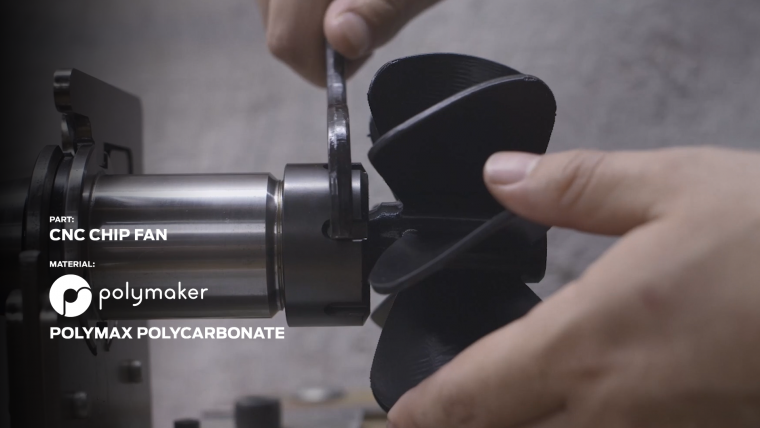
Dr. Xiaofan Luo the CEO of Polymake was quoted as saying
“With more synergy between material and machine we see a greater focus on the applications realized with 3D printing. High temperature materials provide a gateway to production-ready printed parts and the METHOD is the perfect platform to utilize them,”
The company touts its heated build chamber and own soluble support materials, sensors tracking temperature as key advantages of the printer. It also discloses that the new extruder can go to 300°C which could potentially unlock some rather interesting materials such as PA and perhaps even PEKK. Some of the new materials available through their alliance now include Polymaker PC, Jabil ESD safe PETg, Jabil TPE, Kimya ABS Carbon which has been loaded with 30% chopped carbon fiber, Kimya PETg carbon, and Mitsubishi Durabio which is a bio-based PC.
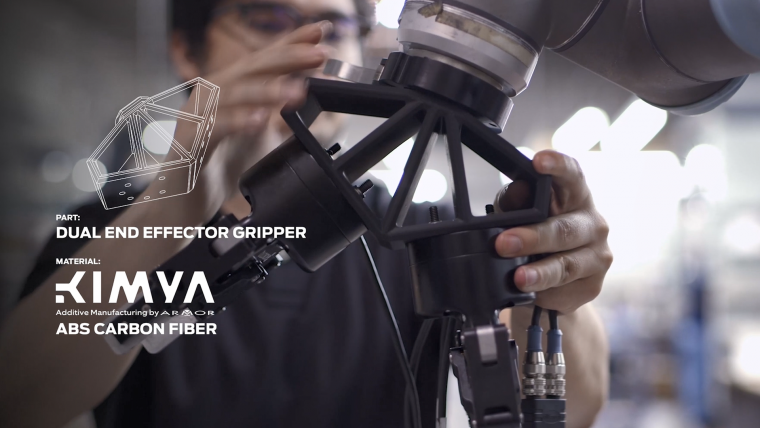
Makerbot’s rise was swift and the company pioneered desktop 3D printing. Its fall was almost as fast with serious engineering missteps, quality control issues accompanied by deep feelings of hate from many in our community. A significant portion of us will never really forgive Bre for his missteps and the fact that the firm turned its back on open source and even started patenting innovations made by its community. New owner Stratasys has now with the Method developed a credible printer, however. Will we ever love Makerbot again? I’m not sure, but we could use them at one point.
The Method works well and delivers good reliable results. Opening up that machine to a materials alliance should increase the number of materials available for the method. With better pricing and more manufacturing options the Method should be more useful. Just like Stratasys’ materials alliance for its industrial systems an “open materials” or “semi-open materials alliance” is a step away from control towards manufacturing. When manufacturing many suppliers and materials give you confidence and reduce vendor lock-in making it more likely that you’ll use that printer at scale. Whereas being completely open would be even better for end-users I applaud this move towards a more mature industry-ready 3D printing market.
The post Makerbot Method Has an Open Materials Platform, Mitsubishi, Kimya, Polymaker, BASF, Lehvoss and Jabil Join Alliance appeared first on 3DPrint.com | The Voice of 3D Printing / Additive Manufacturing.

